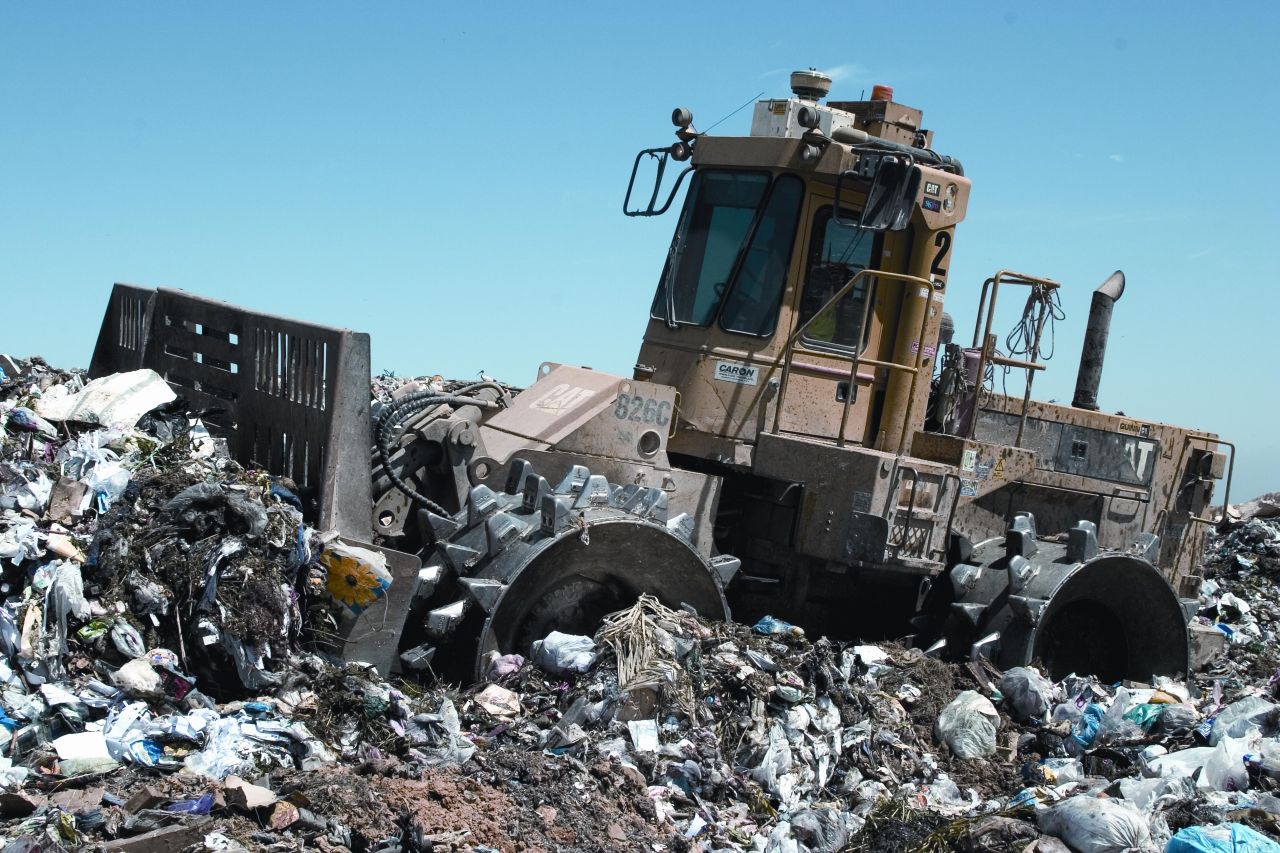Have you ever stopped to think about where all of your waste ends up? In 2009, the EPA reported there were approximately 1,908 municipal solid waste landfills in the continental United States all managed by the states where they are located. All of the trash that gets thrown out, whether it’s from residential, commercial, or industrial buildings ends up somewhere and it might be closer than you think.
Historically, landfills tended to be locally owned, each town having its own landfill. However, as cities grew and the amount of waste produced increased, landfills became bigger. Environmental regulations to manage the waste and minimize the environmental impact made it too costly for individual towns to manage. As a result, waste handling companies such as Waste Management now operate most landfills around the country.
There are currently two fully-functioning landfills in the greater Rochester area: High Acres Landfill and Recycling Center and Mill Seat Landfill. High Acres can be found in Fairport, New York, a twenty-five minute drive from the University of Rochester. It is owned and operated by Waste Management of New York. Mill Seat Landfill is located in Bergen, New York, about a twenty minute drive from the University. This landfill is owned by the Monroe Country Department of Environmental Services but operated by Waste Management of New York.
High Acres Landfill and Recycling Center has existed since 1971. It received its most recent permit for operation in 2013 and the permit will expire in 2023, unless the landfill reaches capacity beforehand. The landfill accepts municipal solid waste from residential, institutional, and commercial customers, construction and demolition debris, and special waste in accordance with NYSDEC Part 360.
High Acres is not only a facility to manage municipal solid waste, but also includes organics recycling, renewable energy production, and wildlife habitat management. High Acres covers about 1,000 acres of land. Adjacent to the landfill is the award winning High Acres Nature Area, created as a part of Waste Management’s commitment to sustainability. The 250 acres of preserved land is set aside for the preservation of natural habitats and ecosystems as well as for public recreation purposes. High Acres also has its own renewable energy facility which creates energy to power over 10,000 homes each year. Landfill gas is converted into clean energy onsite. To divert as much waste as possible from the landfill, organic material such as leaves and food waste are composted. University of Rochester students and staff have toured High Acres to see these sustainable features in action.
The other landfill in the Rochester area, Mill Seat Landfill, has been operating since 1993. This is where trash from the University is transported and buried. Its most recent permit was issued in 2011 and will expire in 2021 at which time the facility can apply for another permit. The landfill is permitted to receive municipal solid waste from residential, institutional, and commercial customers, construction and demolition debris, and special waste in accordance with NYSDEC Part 360. Since 2002, Monroe County has partnered with Waste Management to operate and maintain the site. Along with the landfill, the site contains a renewable energy facility which creates power for more than 6,000 homes each year. The renewable energy facility also transforms landfill gas into clean energy. Mill Seat’s operations are focused on sustainable practices through renewable energy production and wildlife habitat management.
Waste Management in the University’s contracted service provider for recycling and trash removal. Three of Waste Management’s environmental conservation goals include consuming less, emitting less, and achieving financial objectives. The company aims to consume less water, use less energy and natural resources, and creating areas for wildlife and recreation. Emitting less and lowering emissions, releasing fewer pollutants into water, land and air, and promoting the idea of “reduce, re-use, recycle” are top priorities. Waste Management has created divisions to maintain each one of its goals, including environmental protection, groundwater protection, environmental engineering, air and gas management, and a national laboratory services program which involves testing environmental samples from onsite locations and surrounding areas.
Interested in learning more? Waste Management offers annual open house events at its local landfills, which are open to the public. This year’s open house will take place at Mill Seat Landfill on Thursday, July 28 from 3:00 to 7:00 pm. See this page for details.
Written by Alyssa Lemire, Class of 2017
Photo from wikimedia.org


Great, Your post well explained about our wastes. But if every individual try to use to material which easily dispose will help to environment and all the environmental organizations and institutes in making the environment clean.
This entire post absolutely ROCKS! Thank you for all the hard work you put into it. It really shows.
I strongly recommend attending the annual open house events Waste Management offers, or a similar event at your local landfill. They can be quite an eye-opener when you see the enormous quantity of waste they handle every day. Also, how professionally these companies work to ensure that the waste does not cause problems in the environment.